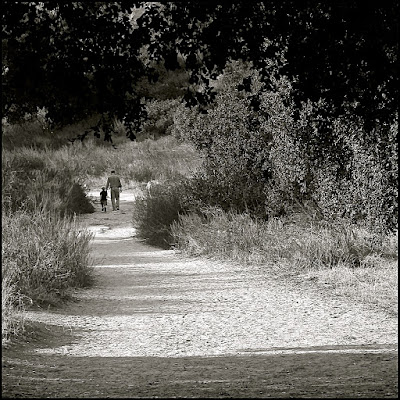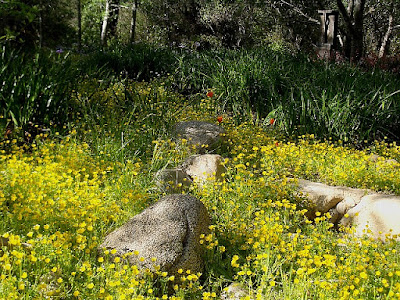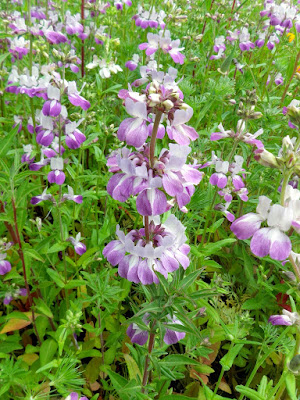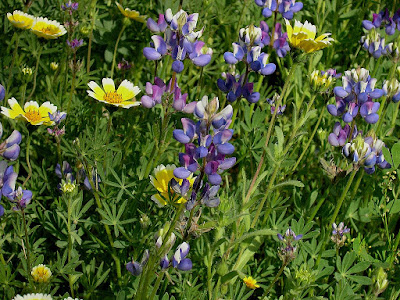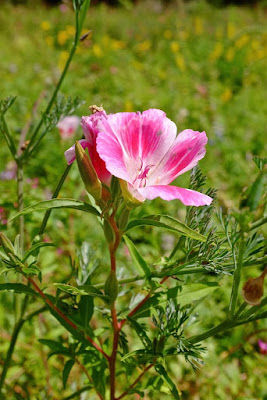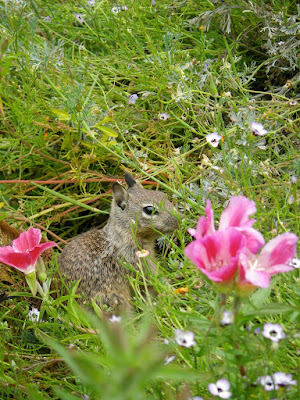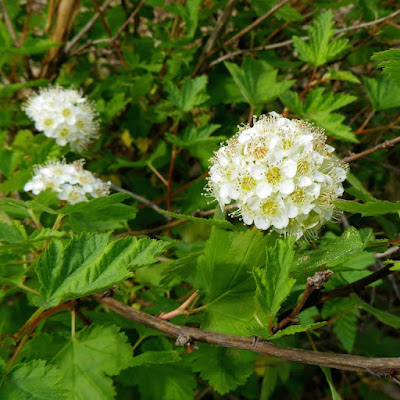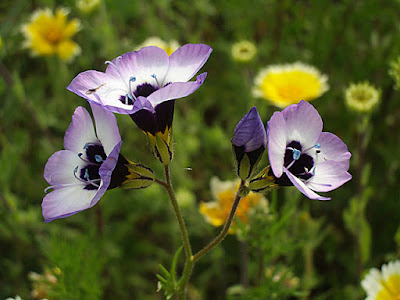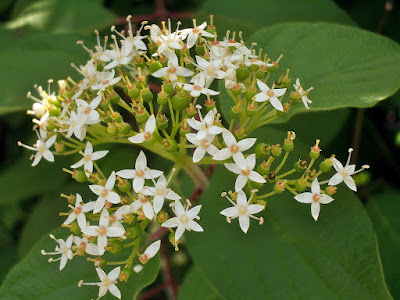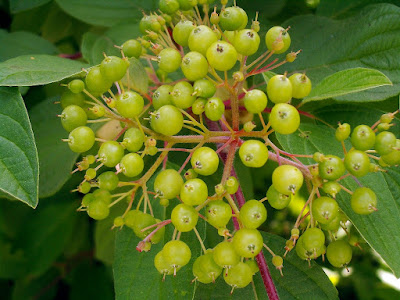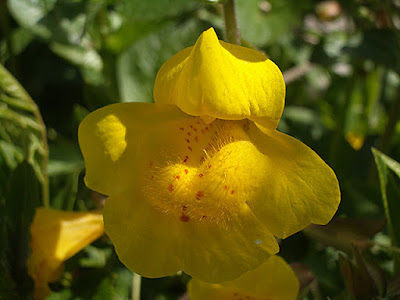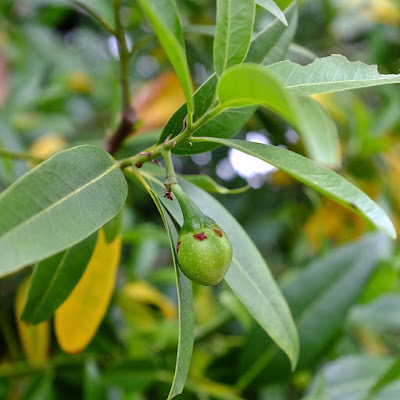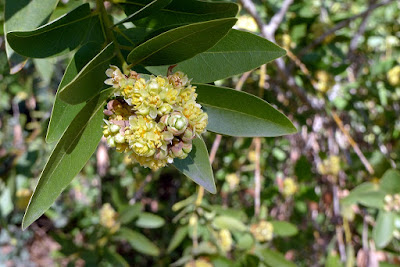A 9 Day Week
"Eight days a week
Is not enough to show I care"
- The Beatles
An eight day week was not enough for The Beatles, and apparently not for California Native Plant Week as well. So, here we are with my last plant for this year.
x Chiranthofremontia lenzii
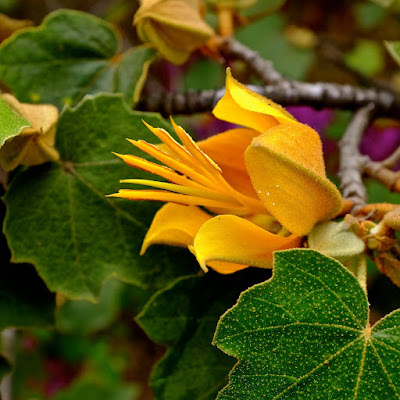 |
| x Chiranthofremontia lenzii: photo by Cliff Hutson |
X Chiranthofremontia lenzii (hybrid monkey hand tree) is a large bush that is a hybrid between Mexico's
Chiranthodendron pentadactylon and California's
Fremontia californicum. It has a glorious yellow/orange blooms. The distinctive flowers appear in late spring and early summer; the stamens are long, curve upward, and give the distinct impression of a clawed hand or paw.
The nothogeneric name is derived from the two generic names using "Chir- antho" (hand, anther) and "Fremont" portions of the parental generic names. The species epithet honors Dr. Lee Wayne Lenz, Director Emeritus of Rancho Santa Ana Botanic Garden, who made many native hybrids, including Fremontodendron 'California Glory,' 'Pacific Sunset,' and 'San Gabriel'.
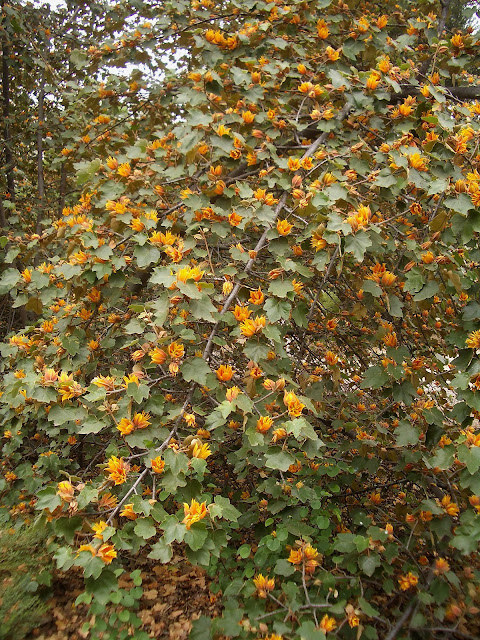 |
| Hybrid Monkey Hand Tree: photo by Cliff Hutson |
Earth Day Again
I was in grad school when the very
first Earth Day happened. The campus was alive with the sound of music and many well attended events. Obviously, this year's 50th anniversary observance has to be very different.
The Union of Concerned Scientists has planned a three-day event called Earth Day Live.
What Is Earth Day Live? Find out
here.

